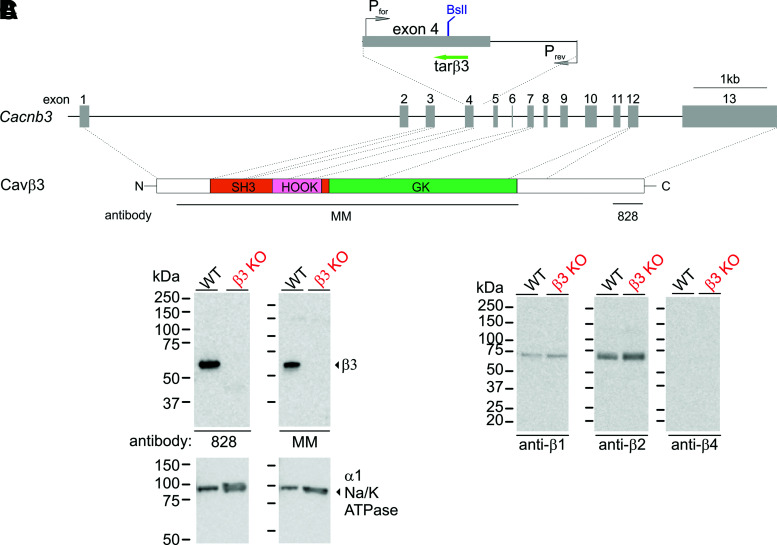Figure 1.
Generation of Cavβ3-deficient β-cells. A: CRISPR/Cas9-based strategy to delete the Cacnb3 gene. The positions of the target sequence for the guide RNA tarβ3, of the restriction enzyme BslI site present in wild-type and absent in the introduced mutation, and of the oligonucleotide primers used to amplify Cavβ3 fragments are indicated (top). The Cacnb3 gene (middle), the Cavβ3 protein domains (bottom) (N, N-terminus [white]; SH3, Src-homology 3 [orange]; HOOK [pink]; GK, guanylate kinase [green]; C, C-terminus [white]), and the Cavβ3 fragments used to generate the anti-Cavβ3 antibodies MM and 828 are indicated. Western blot of protein extracts from wild-type (WT) and Cavβ3-KO Ins-1 β-cells (100 µg protein/lane) using antibodies against the Cavβ3 (B) and Cavβ1, β2, and β4 (C). Western blots indicate the absence of Cavβ3 protein in Cavβ3-KO cells and the presence of Cavβ1, β2, and β3 but not of Cavβ4 in WT cells. The α-subunit of the Na+/K+ ATPase protein served as a loading control (B).

